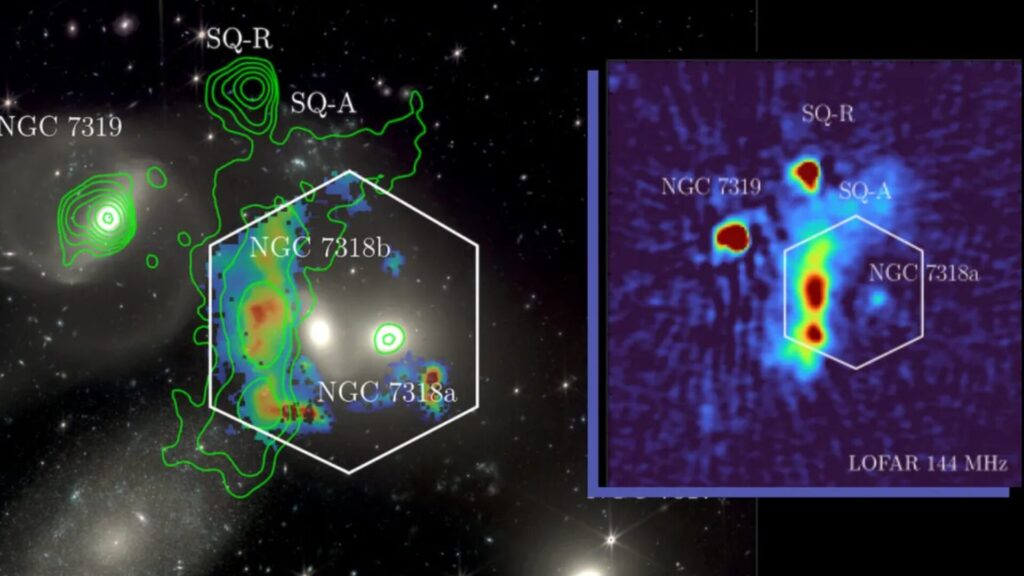Astronomers were able to observe a collision between two galaxies which occurred in the very chaotic Stephan’s Quintet.
A galactic collision at a dizzying speed of 3.2 million kilometers per hour was recently observed by researchers. In a study published on November 22 by the University of Hertfordshire and spotted by the media Space.com, academics detail the origin of this crash, certainly distant, but interesting for astronomy.
The crash occurred in Stephan’s Quintet, a visual grouping of galaxies located about 290 million light-years from Earth. The event was triggered when the galaxy NGC 7318b crossed this galactic grouping, leaving in its wake an extremely powerful shock wave. This impact awakened Stephan’s Quintet, generating intense activity in this already chaotic environment.
Galaxies are constantly moving and shifting because of gravity pulling them toward each other. They can collide or merge, as in the case of Stephan’s Quintet.
This discovery is not limited to the spectacular aspect of the event. It provides crucial information for understanding how galaxies, including our Milky Way, were formed and structured over time. Galactic collisions, although violent, play a central role in their evolution by redistributing gas, stars and dark matter.

800 times faster than the champion fighter jet
To better understand this speed, it is useful to compare: the fastest American combat plane reaches a maximum speed of 4,023 km/h. The galaxy NGC 7318b therefore exceeds this performance by around 800 times.
« Since its discovery in 1877, Stephan’s Quintet has fascinated astronomers because it represents a galactic crossroads where past collisions have left a complex field of debris » explains Marina Arnaudova, researcher at the University of Hertfordshire and leader of the team. “ The recent impact, at more than 3.2 million km/h, generated a shock wave comparable to a supersonic boom, which revived the activity of this galactic group » adds the researcher.
These phonemes can be better observed today thanks to the wide-field WEAVE spectrograph, installed on the William Herschel telescope in La Palma (Spain), while data from the James Webb space telescope and the LOFAR radio telescope array have enriched the research.
Source: www.numerama.com


